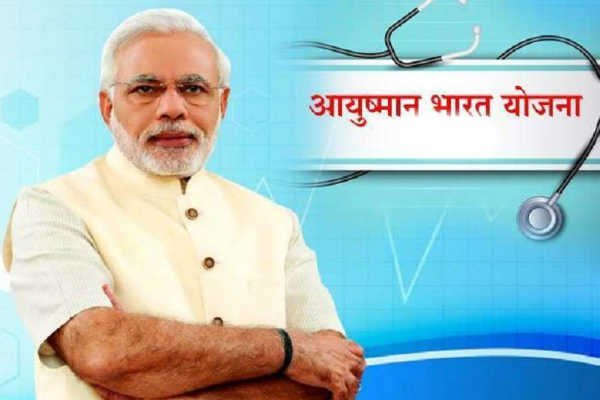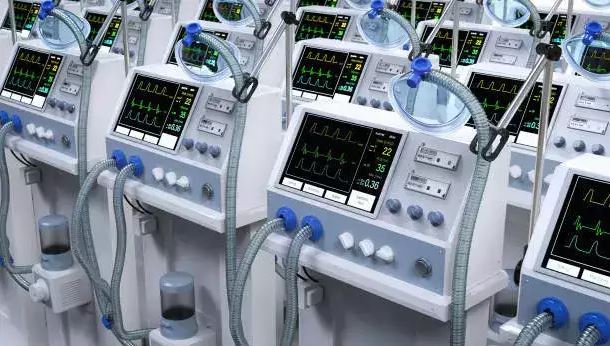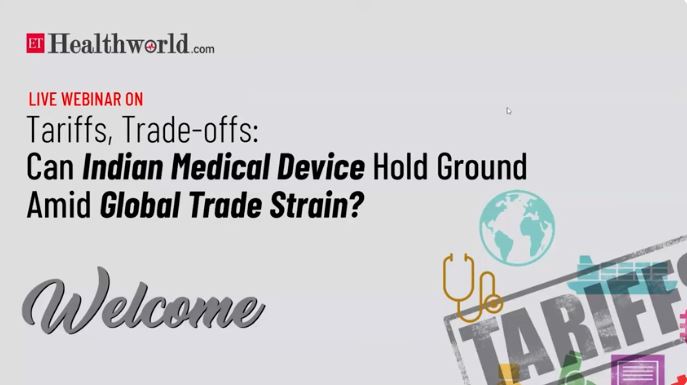On Independence Day, Prime Minister Narendra Modi announced the launch of Ayushman Bharat,now Jan Aarogya Abhiyan covering 50 crore people. The mission is to give access to the country’s poor to quality and affordable healthcare. Around 10 crore families will get health cover worth INR 5 lakh each year under the scheme, and the pilot testing for the same will start today. Health and insurance for all Indians is the foremost mission of the government, Modi also said.
In response to this, eminent health industry leaders and decision makers provide their valuable insights and what this launch could mean for the healthcare industry in India.
Arindam Haldar, CEO, SRL Diagnostics said, “The health of the people of a country is directly responsible for the progress and prosperity of that country. India has come a long way since gaining independence 71 years ago, especially as far as the health of our people goes. In the last two decades or so, life expectancy in India has increased by more than 10 years, infant mortality rate (IMR) has reduced significantly, two infectious diseases have successfully been eradicated: smallpox, rinderpest, and WHO officially declared India ‘polio-free’ in 2014. The change is visible.”
“But the road ahead is still long and winding and there is yet much too be done. The three fold challenge – lack of infrastructure to treat chronic secondary and tertiary diseases, exorbitant treatment cost and high level of out-of-pocket expenses. The time has come to be decisive and bring critical change — prevention, diagnosis, and treatment. Private enterprise must join hands with the government to address health holistically, across primary, secondary and tertiary care systems, covering both prevention and health promotion. This Independence Day, let us pledge to adopt a preventive healthcare mindset, leaving the country with the ability to spend more on other important aspects of socio-economic development,” he further added.
 Dr Prathap C Reddy
Dr Prathap C ReddyDr Prathap C Reddy, Founder, Chairman, Apollo Hospitals Group commented,“The Prime Minister’s Jan Arogya Abhiyan is a call to arms to the medical fraternity to rise to the occasion and work towards easing the healthcare woes of crores of Indians. We welcome the initiative, by which the government takes on the burden, and shares the cost of providing healthcare to those who cannot afford it. It is heartening to see the rapid progress made in a short time since the scheme was announced, and will be welcome relief to millions of poor patients when it is launched next month.
The technology backbone of the Ayushman Bharat will help ensure streamlining of the process of healthcare delivery to those who need it the most. As the first step towards Universal Health Coverage, this is a pivotal moment in the country’s healthcare journey that will require the entire healthcare ecosystem, public and private, to work with a collective sense of purpose and synchrony. The Apollo Hospitals group will support this initiative whole-heartedly as part of our continuing efforts towards universal access. A healthy nation will be an engine of economic growth – and this Independence Day, we re-dedicate ourselves to our commitment to build a healthy and happy India.”
 Ameera Shah
Ameera ShahAmeera Shah, Managing Director, Metropolis Healthcare said, “Ayushman Bharat is a good scheme to give healthcare access to vulnerable families in India. The healthcare segment has historically faced bankruptcy in huge ways in the country, pushing scores of people into poverty. In addition to affordability and accessibility, quality of care is also important, so patients get the right diagnostics and treatment. Today Indian diagnostics market has no minimum standards and less than one per cent of laboratories are accredited. I hope for a India where not only do the citizens have access to affordable healthcare but quality healthcare for them and their families.”
Dr PR Sodani, Acting President, IIHMR University, Jaipur expressed his opinion,”As 70 per cent of individual healthcare costs form people’s out-of-pocket expenses, a national insurance policy for 50 crore of India’s most vulnerable sections, safeguards them from being nudged into catastrophic absolute poverty. The scheme is ambitious in scope but secures a steady source of payments to the healthcare sector and also makes universal healthcare more accessible for the poor. However, the contours of how this mission will be implemented remains to be seen. Without participation from the private sector for-profit and not-for-profit sectors, implementation of the scheme for providing quality healthcare may be difficult.
Dr Sanjiv Kumar, Director, IIHMR, New Delhi, also mentioned, “The Jan Arogya-Ayushman Bharat scheme proposes to go boldly where no previous regime has gone. It enables a new consumer base access to a market which earlier it could ill afford. But the strain it adds on the public exchequer and how such massive numbers would be accounted for and disbursed to healthcare institutions across the country needs more clarity. There are reasoned concerns for quality of healthcare and research on therapy outcomes. The NHPS is a great idea in theory because of its vast coverage and equitable nature in the delivery of healthcare services. However, the experience of schemes such as the CGHS, RSBY, Aarogyashree and state GHS have shown that rates for reimbursement fixed by government agencies does not reflect actual costs borne by hospitals and clinical institutions. The viability of running successful organizations, the quality of both care delivered to patients and the pharmaceutical industry are matters that need to be looked into.
 Chandrajit Banerjee
Chandrajit BanerjeeChandrajit Banerjee, Director General, CII said, “Ayushman Bharat for healthcare is a major programme covering 500 million people and its rollout as early as next month would add huge productivity impetus to the country. PM’s vision of a manned space mission promises to push the frontiers of knowledge for the country, strengthening its position as a global leader in science and technology. The clarion call of housing, electricity, sanitation, insurance and health for all, among others, is inspiring and industry looks forward to further deepening its initiatives in alignment with the PM’s visionary direction.”
“The PM’s announcement of rolling in the policy under Pradhanmantri Jan Arogya through a technologically driven transparent platform is telling of the vision and purpose the government is working with. A part of the larger vision that Narendra Modi outlined is the planned inclusion of lower and upper middle calls at later stages of the initiative. The government also seems to be wanting an effective launch, by initiating a ground level testing phase between now and September 25 when the policy will actually begin being
 Dr Dharminder Nagar
Dr Dharminder Nagarimplemented. While the launch of the scheme is highly welcome, what is also needed to be addressed on a parallel track is accessibility to doctors and hospitals. Without improving our doctor-patient ratio, without increasing penetration of hospitals and tertiary care centres, without ensuring that all health centres in rural areas are equipped with specialists and diagnostic facilities, even this ambitious scheme will only partially serve the purpose,” said Dr Dharminder Nagar, MD, Paras Healthcare.
 Dr Nandakumar Jairam
Dr Nandakumar JairamDr Nandakumar Jairam, CEO, Chairman & Group Medical Director-Columbia Asia Hospitals India expressed his opinions, “It is good that the initiative is technologically driven and will be a transparent medium of implementing the benefits. While these measures should boost healthcare infrastructure in rural areas, tier 2 and tier 3 cities, and will provide employment opportunities, there still is a need for creation of conducive environment in these regions for high costing quality tertiary care delivery to sustainably serve the population. We are highly hopeful that the government will look in to the suggestion of private healthcare players and grow a model to ensure that the best quality healthcare is delivered in various pockets of the country.”
 Daljit Singh
Daljit SinghDaljit Singh, President, NATHEALTH shared his insights on the scheme,“Effective implementation of such a scheme needs meticulous planning and effective management on the part of the government agencies and insurance providers. It is promising to note that the Prime Minister made it very clear that the scheme will be technology-driven for transparency and accountability. Inadequate monitoring and incorrect data could jeopardize the effectiveness of the scheme, in which case the benefits may never reach the needy.”
 Anjan Bose
Anjan BoseAnjan Bose, Secretary General, NATHEALTH further said, “To achieve set goals under the scheme, all stakeholders need to move forward in a collaborative spirit. At NATHEALTH, we firmly believe that accessibility, affordability and accountability are the prime priorities for healthcare sector. Building a strong network of providers is very critical for successful implementation of the scheme.”
Medical Technology Association of India (MTaI) shares its thoughts on the scheme, “Healthcare sector drives on four major wheels – healthcare provider (hospitals), pharmaceutical industry, medical technology (MedTech) industry and the health insurance industry. While the government has recognised the role of hospitals and insurance companies in implementation of NHPS, pharma and medical technology sectors have not received a reasonable acknowledgement so far. Pharma and medical technology are ingredients in healthcare. Therefore, the two sectors should be considered in all government deliberations on NHPS. As the successful implementation of NHPS will be a result of seamless amalgamation of all players in the healthcare value chain, the necessity of a regulator should be evaluated.
Package rates for each healthcare process should be decided keeping the long-term sustainability of all stakeholders. The system where the cost of medical equipment is subsumed in the overall package rates may lead to supply of sub-standard devices, which may in turn deteriorate the quality of treatment under this trailblazing scheme. A related point is who will keep an eye on the quality of drugs and medical devices used for treatment in the scheme? Given the scale of the scheme, an appropriate mechanism to monitor the quality aspect will need to be found. One important component of NHPS is that the government will create 150,000 wellness centres to provide primary care in areas where such a facility is absent. This will require a massive skill development exercise to train the healthcare professionals. MTaI members annually train 2,50,000 healthcare professionals including doctors, nurses, and primary healthcare service providers in the country and make them patient ready. These companies cover the entire spectrum of medical devices and can contribute immensely to this cause under the umbrella of MTaI.”
 Jyoti Punja
Jyoti PunjaJyoti Punja, Chief Operating Officer and Customer Officer, Cigna TTK Health Insurance Company shares his thoughts, “The scheme would provide significant business opportunities for healthcare professionals including insurance companies, and TPAs. The health insurance premium rates for Ayushman Bharat are likely to been determined on several factors including how the scheme is designed to control fraud and abuse, among others. We believe besides addressing the challenges of geographic inaccessibility and unaffordability, Ayushman Bharat has the potential of creating a cost-effective digitalised health economy and catapulting India to the league of developed nations. There is increasing awareness that it is unsustainable for a country of 1.3 billion people to rely on household savings to pay for health care. Hence, reducing the cost of universal health coverage is imperative, while it also requires parallel investments in the neglected public sector.”
 Sanjeev Gupta
Sanjeev GuptaSanjeev Gupta, Managing Director, Kusum Group of Companies further elaborated on the scheme, “The government’s Pradhanmantri Jan Arogya initiative is taking shape since it was first announced as Ayushman Bharat by Arun Jaitley in the budget speech earlier this year. It is really good to see that the government is actively working on rolling-in the policy on the ground. The government has made this a technology driven initiative which is a great step to ensure transparency and effective implementation, and at a grander scale, this initiative would encourage more work in development of overall health infrastructure in the country. As a pharmaceutical organisation, we welcome these steps taken by the government as growing healthcare infrastructure in the country will help 50 crore poor people access medicines and essential drugs. What we look forward from the government is a mechanism which encourages public private partnership while ensuring that quality medicines reach out to the masses.”




